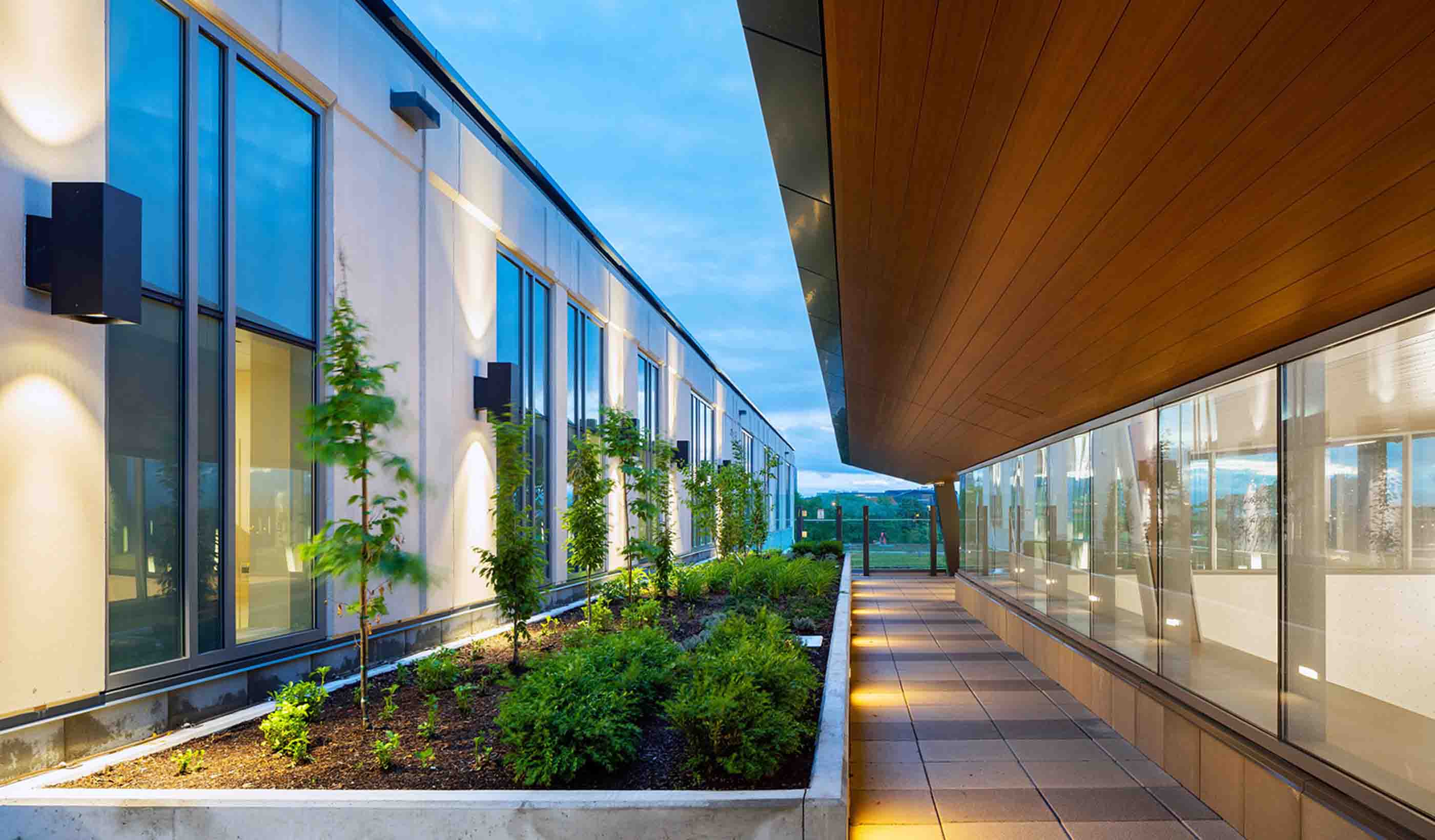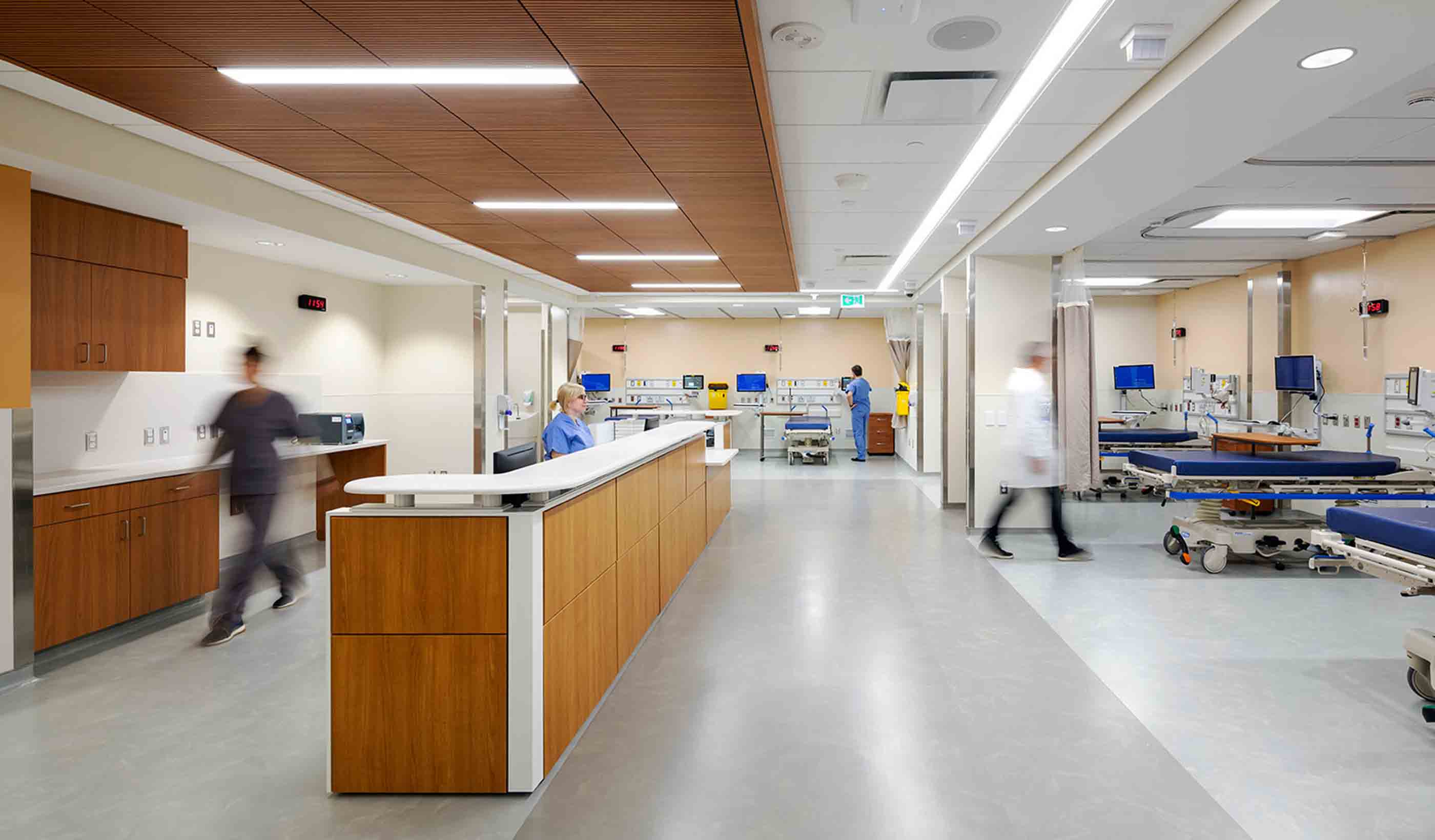With new CSA standards, healthcare systems will need a decarbonization roadmap
June 20, 2024
June 20, 2024
Canada’s new CSA standards will encourage healthcare institutions to map their route to net zero
Why do Canadian hospitals need a decarbonization roadmap? Like many of the roads in Canada, the road to decarbonization and net zero emissions for hospitals is likely to be long and winding. Healthcare buildings need a lot of power and must operate in extreme conditions.
Canada’s upcoming standard updates will require most institutions to start mapping their path to decarbonization. These updates are part of our country’s journey to achieve net zero emissions by 2050. The new standard, CSA Z317.2, is putting in place planning requirements that will have a significant impact on healthcare buildings, their emissions, and their resiliency. What does this mean for Canadian healthcare institutions?
Formerly known as Canadian Standards Association (now the CSA Group), CSA is a Canadian nonprofit organization that develops standards for products and systems, including healthcare ventilation. CSA standards are comparable to the ASHRAE standards used in the US. They help define the best, safest, and most efficient building systems.

At the Etobicoke General Hospital in Mississauga, Ontario, the Stantec team was engaged to complete energy and water assessment of the existing facility and an integrated sustainability plan that addressed the current and future buildings.
Canadian governments use these standards as a basis for their building codes. The CSA standard for hospitals and other healthcare facilities is directly cited in the National Building Code. It guides designers and owners of healthcare facilities when they build new or renovate hospitals.
The new 2025 version of CSA-Z317.2 standard has been shared in draft format for public review. The feedback has been overwhelming, so the CSA is revising again. The final version will be released later this year. It will have a major impact on the design and operation of HVAC systems in Canadian healthcare.
For example, adiabatic humidification uses much less energy than traditional steam humidification. In the past, regulators have excluded it from health facilities due to concerns about infection control. Recently, this technology has advanced and become safer to use. The new CSA-Z317.2 standard will allow hospitals to adopt this more efficient process.
The biggest news for us, however, is how the new CSA-Z317.2 will take on carbon emissions, bringing our Canadian health buildings closer to net zero by 2050. For existing buildings, the new version of the standard as currently drafted includes a new decarbonization mandate for owners to contend with. One-for-one replacement of their existing systems is no longer adequate. The CSA has raised the bar. And it requires most hospitals to chart their path to zero carbon.
For new building projects, it’s a big change. It means designers must now account for climate risk and take approaches that drive emissions toward zero in HVAC systems for all new healthcare buildings.
Canadian healthcare institutions need to be aware of the new CSA standard and its implications. They may need guidance to navigate the code changes and create a decarbonization roadmap that is realistic, feasible, economically sustainable, and cost-effective. Our team has charted carbon neutrality roadmaps for a half-dozen healthcare projects. And we have a deep understanding of the nuances and challenges of healthcare HVAC design and decarbonization strategy.

Etobicoke General Hospital in Mississauga, Ontario.
When they go into effect, the standard requires those institutions with buildings that can’t meet net zero to create a decarbonization roadmap to show how they will get to net zero emissions and keep it on file. Many healthcare institutions are not ready for the new CSA standards. They may be older facilities that haven’t had the opportunity to update or the budget to decarbonize. They shouldn’t panic, but they do need a plan.
Every hospital needs a decarbonization roadmap. It will give them a wider perspective on the possibilities for integrated transition. Using a longer-term plan, allows them to allocate budgets and find synergies with other larger planned projects, such as renovations of clinical spaces.
The roadmap is a living document for the client to maintain. It grows as the marketplace changes. It evolves with the wider plans for the facility to help a healthcare institution make sure all its buildings are carbon neutral by a target date. The roadmap shows what the client needs to do to meet local/regional climate/emissions targets. For example, a commitment to a clean electrical grid by 2035. The roadmap tells them what they will need in terms of space, systems, retrofitting, and replacement to meet future goals. The roadmap should acknowledge the institution’s master plan and its long-term goals within a realistic budget framework.
Not all carbon neutrality roadmaps are equal. They require a complex understanding of healthcare buildings, decarbonization strategy, and the nuances of code.
Not all carbon neutrality roadmaps are equal. They require a complex understanding of healthcare buildings, decarbonization strategy, and the nuances of code. Here’s a good place to start.

How Canadian healthcare buildings can get to net zero carbon. Example from Ontario.
The new CSA standard will support Canada’s transition to net zero emissions by 2050. This transition will require us to extensively retrofit many of Canada’s buildings.
To make progress toward our decarbonization goals, we need to develop RFPs for decarbonization roadmaps and create clear goals and a delivery plan. Hospitals need to develop decarbonization roadmaps. The roadmaps will help them feasibly implement large-scale retrofits on a realistic timeline. Just think of the new CSA standards as another very good reason for healthcare institutions to develop a robust decarbonization plan.